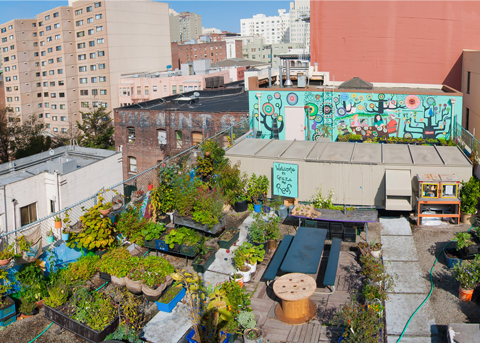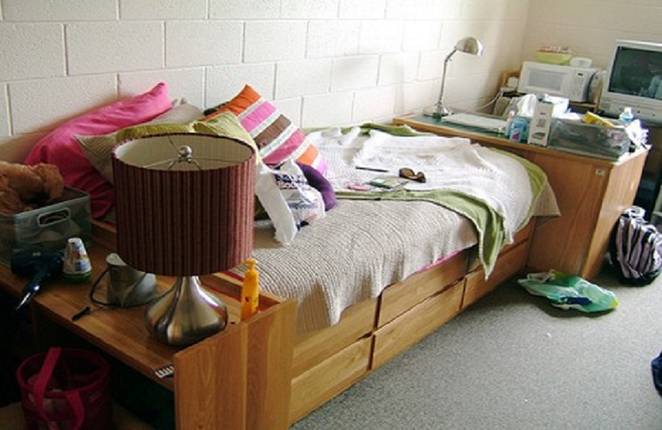By Jacob Hurwith on Mar 7, 2016

“Go green!” It’s the phrase that defines the millennium, and solar energy is a major player. In the second quarter of 2015, the U.S. solar industry hit 1,393 MW of installed solar capacity, and supplied 40% of all new electric generating capacity in the first half of the year alone. That’s more than any other energy technology! And while many shy away from the idea of solar power for financial reasons, the cost to install solar capacity has fallen by more than 73% since the implementation of the Solar Investment Tax Credit (ITC) in 2006.
The world is already going green in big ways. In fact, the U.S. Energy Information Administration (EIA) estimates that about 11% of world marketed energy consumption comes from renewable energy resources (biofuels, biomass, geothermal, hydropower, solar, and wind) and project the number to be at 15% by 2040. Further, the EIA estimates that about 21% of world electricity generation was from renewable energy in 2011 and is projected to hit 25% by 2040. And while all sources of renewable energy are valuable, solar is perhaps the most accessible. The sun’s rays are easily harnessed from anywhere in the continental U.S, and with some strategic planning, you can make your home a solar power hub.
This guide is designed to give you everything you need to know about converting to solar. It will contrast the differences between solar and traditional fossil fuels, explain the different kinds of designs of solar energy systems, discuss the myriad of solar products available for the home, and then address what is perhaps the biggest issue: dollars and cents.


Solar Energy Versus Fossil Fuels: Why Make the Change?
Breaking out of your comfort zone when it comes to fueling your home is intimidating, and perhaps one reason many don’t make the transition. However, there are significant and valuable advantages to switching from fossil fuel to solar energy. And the statistics will blow you away!
Forget the politics about fossil fuels versus renewable energy. The fact is, fossil fuels are going to run out someday. They are limited and finite by nature, and as the population continues to grow, it’s only a matter of time before demand beats out supply. Some EIA estimates predict only 20 years of oil left before prices sharply jump, which could lead to a potential international economic crisis. This is especially true as the number of developing countries increases; not only are they becoming industrialized and thus creating more demand, they are still new to the system and haven’t yet mastered efficiency. This can lead to more consumption, and worse yet, more waste. It’s simple: solar energy potential is measurable by year. Fossil fuel energy is measurable only by known reserves. It’s an intriguing thought, isn’t it?
Worried about your carbon footprint? Solar energy is also crazy clean compared to fossil fuels. Natural gas emits between 0.6 and 2 lbs. of carbon dioxide (CO2) per kilowatt-hour, and coal between 1.4 and 3.6 lbs. per kilowatt-hour. Solar power, on the other hand, emits only 0.07 to 0.2 lbs. per kilowatt-hour. There’s simply no comparison! We can fight global warming emissions by going solar; a study by the U.S. Department of Energy’s National Renewable Energy Laboratory found that generating 80% of America’s electricity from renewable sources by 2050 could reduce global warming emissions from electricity production by about 81%. We may not be able to completely reverse the damage fossil fuels have already inflicted on the environment, but solar energy gives us the opportunity to dramatically decrease any future harm.
There’s also a common misconception that converting to clean energy will cost American jobs, but this is not true. Solar energy actually creates jobs! In fact, there are more people in the U.S. employed by solar energy companies than in coal mining. The industry is growing ten (yes, TEN!) times faster than the American economy. In 2012 alone, the fossil fuel industry cut 4,000 jobs, but solar added a whopping 14,000 new jobs. That’s fantastic in any economy, but especially in America where there is still a significant need for employment opportunities.
Solar energy also makes the power grid more secure. If a power plant goes down without warning (via natural causes or malice), it can cause problems for the entire electrical grid. On the solar side, if multiple (hundreds, even thousands) of solar systems go down unexpectedly, the rest of the grid should be fine. Plus, since most homes use solar energy as a supplement to traditional energy systems, if an individual home’s solar system went down, the residents wouldn’t be left totally in the dark.


Understanding Solar Energy Systems: Active Design & Passive Design
There are two ways to access solar-powered energy in your home: passive design and active design. Both are excellent ways to make your home more energy efficient, but there are distinct differences between the two.
The easiest way to understand passive design is to think of a greenhouse: natural sunlight enters through the windows and the interior absorbs and retains the heat. More specifically, south-facing windows are used as “collectors” of solar energy. The sun travels through the glass and is directed into the room. It’s distributed throughout the house using a basic rule of thermodynamics: heat moves from warm areas to cool spaces and surfaces. Passive systems are one of the most natural ways to go solar.
The trick with passive solar energy systems is that they work best if a house was already designed with the system in mind. However, there are plenty of ways to convert your current home to a passive system. Installing large, south-facing windows is one of the simplest ways to adapt your home. You can also install Trombe walls, which are made of absorptive materials that store heat during the day and slowly release it at night. Trombe walls use vents to help the process: cooler air from the room in question is pulled through a bottom vent to be heated. The warmed air then rises and flows into the room through the top vent. Even after the sun sets, the wall continues (for a time) to exchange the cool air in the room for warm air. A major benefit of incorporating Trombe walls is that they radiate heat in infrared, which is more penetrating and pleasant than convective forced air heating systems. (Fun fact: glass rooms or “sunspaces” on the south side of your home can give you up to 60% of your winter heating!)
Active systems are another great way to convert to solar. An active design uses photovoltaic (PV) panels — also referred to as solar cells — to collect energy and store it for later use. The solar cells use either air or liquid as conductors and are usually mounted and stationary, though some are designed to track the sun throughout the day. Active systems can be large enough to support power for an entire community, or small enough to power only a single home. Some use multiple panels to create modules.
If you’re looking for a lot of power, a concentrated solar power (CSP) system is distinguished by its ability to operate as a utility-scale power plant. This active design system uses fields of mirrors to concentrate solar energy into channels holding heat-responsive fluid. The high temperatures excite the fluid so that it powers an engine or turbine that in turn powers an electric generator. CSP systems are one of the most powerful solar options, but they require a substantial initial investment and aren’t as resource-friendly when it comes to land and water. The Southwest has ideal sunlight conditions for this kind of system, but the water supply needed places heavy demand on the arid climate.
It’s important to note that installing a solar energy system does require certain permits, but typically your installer will obtain them for you. The types and costs of permits will vary from place to place, so it’s important you see what the standard is for your city and state.


Beyond Home Heating: Other Solar Products for Your Home
There are endless ways to make your home solar efficient, and it’s not just limited to how you heat the house itself. Solar swimming pool covers can help maintain heat overnight as well as create heat throughout the day by trapping a warm layer of air between the cover and the water’s surface. If you have livestock (or perhaps just an over-adventurous pet), solar fence chargers are a great way to keep your electric fence charged and your animals safe. Looking to make your yard aesthetically pleasing but don’t want to go overboard with electricity costs? Oh, the solar possibilities! From solar power fountains and birdbaths to garden lights to wind chimes with solar LED lights for extra flair, it’s never been easier to liven up your outdoor spaces without racking up the energy costs. There are even solar-powered gate openers for those looking to add a little privacy to their homes without facing the annoyance of manually opening and closing a gate.
You’ve probably heard of the world’s first solar-powered car, but that’s not the only motor switching to solar. A solar-powered lawn mower is another awesome way to reduce your household’s pollution emissions. Those made to be solar-powered can fall on the more expensive side, but for those that are handy, you can convert your own.
A fairly common home solar product is the solar water heater. Like home heating systems, solar water heaters come in passive design and active design. Passive solar water heating systems tend to be less efficient, but they are less expensive than active designs and tend to be more reliable and durable. Active systems come down to two variations, direct and indirect circulation. Direct circulation systems use pumps to circulate household water through collectors into the home. These work well in warmer climates where it rarely hits freezing temperatures. Indirect circulation systems use pumps to circulate a non-freezing, heat-transfer fluid through collectors and a heat exchanger. The water is heated there and then flows into the home. Indirect systems are a more ideal option for climates prone to low-to-freezing temperatures.
Solar water heaters do tend to be pretty expensive to install upfront, but overall, they can save you up to 50% on your energy bill. Keep in mind that when buying one, knowing what size is right for your home is essential. If you go too big or too small, you’ll end up wasting energy anyway!


Justifying the Cost: Invest Now & Watch the Savings Start!
There are amazing federal tax credits for purchasing a solar energy system for your home. Until Dec. 31, 2016, Americans can receive 30% of the cost with no upper limit. It includes both existing homes and those being constructed, and isn’t limited to only a primary home. Rentals, however, are not included.
There are certain requirements for these tax credits. Solar water heaters are only candidates if they heat within the home; they can’t be solely devoted to a pool or hot tub. At least half of the energy generated must come from the sun, and the system must be certified by the Solar Rating and Certification Corporation (SRCC) or a comparable state government-endorsed entity. PV systems must provide electricity for the residence and meet applicable fire and electrical codes. As long as you get your bases covered with the criteria, the tax credit will even cover the cost of installation!
There are also state and local tax benefits for going solar that you can receive in addition to the federal breaks. For example, Los Angeles residents who convert to solar can take the federal ITC, plus a property tax exemption from the state of California. They’re also eligible for a rebate of $0.12 per kilowatt-hour for 20 years from the city of Los Angeles.
Although buying a home solar energy system is a great investment in that it increases the value of your property,there are also leasing options available. These options almost always include maintenance and repair of the system. Lease agreements can range anywhere from no money down to about $3,000.
And it’s not just tax money you can save! The average house that converts to solar power will likely save tens of thousands of dollars throughout the course of their solar panel system’s lifetime. The average middle-class family that leases a solar power system can save around $600 a year.
PV panels alone can cut monthly electric bills by 50-90%, and they are a great way to guard against future electricity price increases (which can run at 4% or more per year). That means that ten years from now, even if the cost of electricity has increased dramatically, your solar power system rates will stay low since the sun will never charge you more for power. And the cost of PV panels themselves has dropped and continues to fall; since 2000, prices have fallen from $7.50 per watt to $2.50 per watt. While it can still be a large investment, the monetary (not to mention environmental) benefits are immediate.


Conclusion
With a powerful combination of lower electric bills, reduced pollution, tax incentives and so much more, it’s difficult to find a reason not to consider the switch to solar energy. Solar offers a cleaner, renewable alternative to fossil fuels and the list of solar products is growing every day. An investment today means savings for years and years to come, not to mention a cleaner planet!






